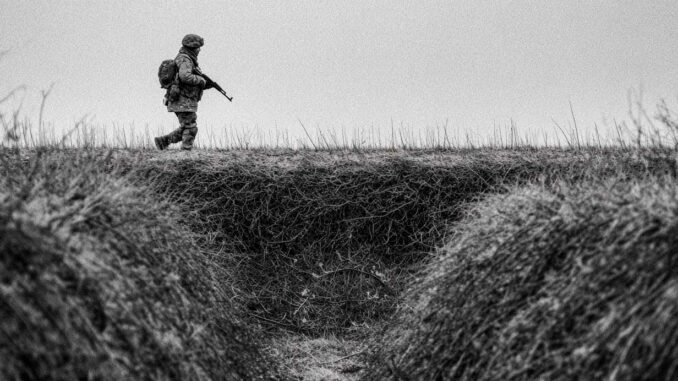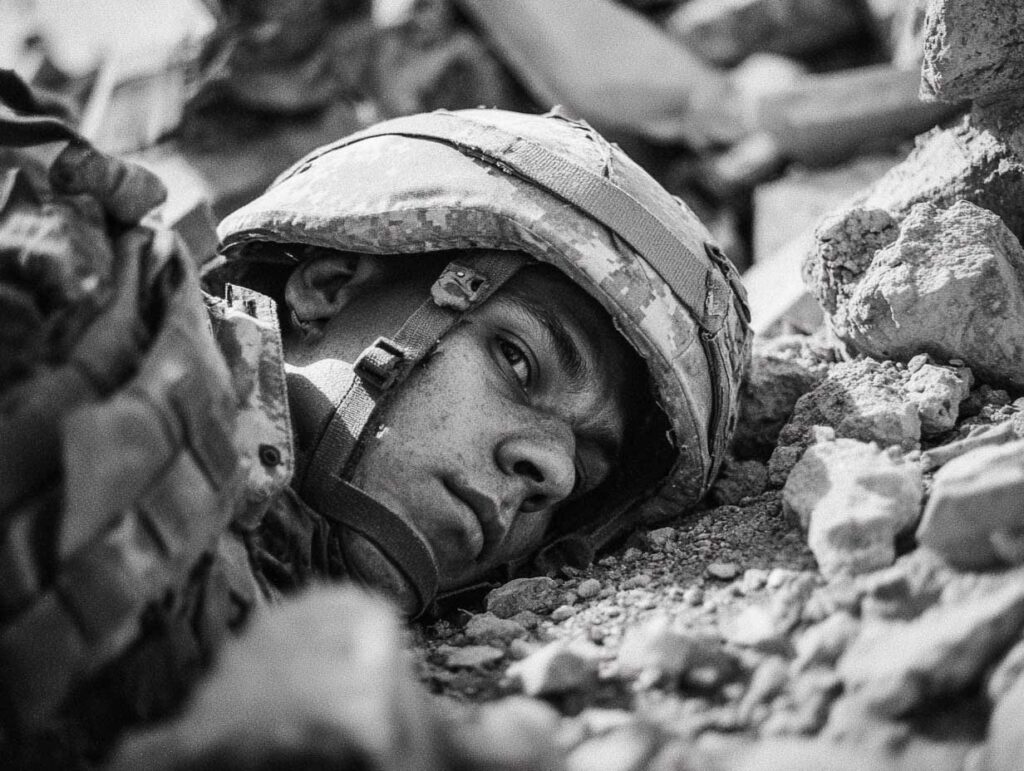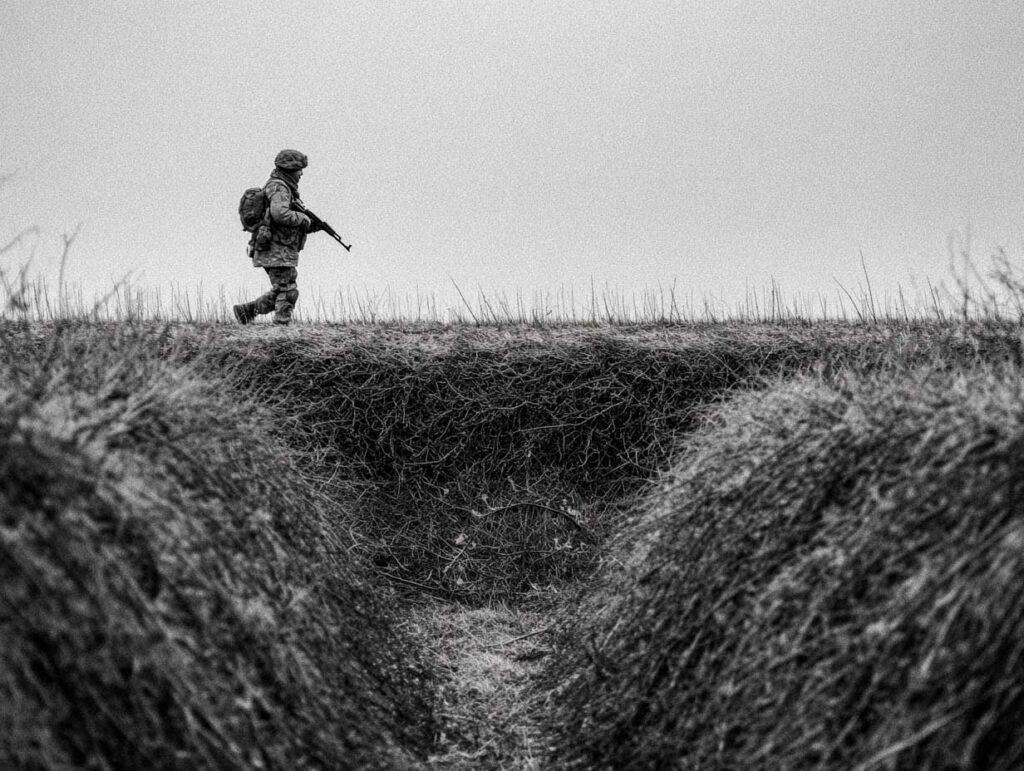
Coordinated action by Europe could weaken Russia in the long term. Analysis of the military, economic, and political levers available from 2025.
The war in Ukraine is entering a decisive phase. As the United States scales back its military support, European countries must decide whether they simply want to slow Russia’s advance or use this period to exhaust Moscow’s ability to pose a lasting military threat. A coordinated European strategy focused on military support for Kyiv, precision strikes on Russian infrastructure, and targeted economic measures against Russian oil could deprive Moscow of the resources it needs to rebuild its military. This strategy has a narrow window for implementation: the end of 2025 for the Russian army’s industrial transition and the beginning of 2026 for the budgetary decisions imposed on the Kremlin. If it is not seized, Europe will have to face a reconstituted Russia alone from 2027, with increased military risk on NATO’s eastern flank.

A Europe without a common vision of victory
The current dynamic is based on an unspoken assumption: to slow down Ukraine’s defeat without committing to a coherent strategic plan. Yet Europe has the military and industrial resources to reverse this defensive logic.
The lack of a clear objective weakens decision-making
Since the gradual withdrawal of the United States, Europe has stepped up its declarations of support for Kyiv. However, this stance masks a structural inability to define a strategy for victory. Aid is being provided without a master plan. As a result, efforts remain fragmented, defensive, and driven by internal political deadlines.
Ukraine is resisting, but at the cost of a constant effort to wear down Russian forces. If it manages to maintain this pressure until the end of 2025, Russia could reach a point of military exhaustion that would be difficult to reverse. Moscow would then be forced to rebuild its army from scratch, with new, more expensive equipment, and within a tight budget.
The threat of a Russian return as early as 2027
The scenarios studied within NATO consider that in the event of a temporary withdrawal, Russian forces could be reconstituted as early as 2026-2027. Despite a massive loss of its officer corps, Moscow can rely on a high level of recruitment—between 35,000 and 47,000 new recruits per month in 2024. But this influx is fragile: it relies on substantial bonuses, which are difficult to renew, and on the promise that the war is coming to an end.
If the conflict drags on with no clear prospect of victory, Russia will be forced to abandon voluntary enlistment in favor of partial mobilization, which risks provoking domestic social unrest that will be difficult to control politically. A coherent policy on the part of Europe over the next twelve months could therefore freeze Russia’s military potential at a level that does not threaten NATO.
The decisive role of Russian industrial attrition
The central factor in Russia’s military rebuilding remains its industrial capacity, which is itself dependent on its energy revenues.
A military apparatus running out of stock
By the end of 2025, Russia will have used up most of its Soviet-era armored vehicles. From 2026 onwards, it will have to produce new equipment, including battle tanks and artillery systems, at a much higher logistical and industrial cost. However, Russian arms factories have limited production capacity and are highly dependent on imports of electronic components.
At the same time, the wear and tear on surface-to-air missiles used against Ukrainian drone strikes is depleting stocks faster than they can be replenished. Continued precision bombing of Russian logistics, energy, and industrial infrastructure will make this situation untenable in the medium term.
Exploitable energy vulnerability
The Russian military budget relies heavily on oil revenues. In 2024, a drop in crude oil prices below $60 per barrel—the budget reference threshold—immediately forced the Kremlin to freeze military spending increases. However, more than 60% of Russian oil exports transit through the Baltic Sea, particularly via the Strait of Denmark.
If the European Union decided to impose secondary sanctions on ships involved in these exports, they could be deregistered and then banned from Danish waters. The ability to redirect ships to other ports would be limited by a lack of infrastructure, leading to a sharp drop in Russian exports.
Receiving ports, often located in third countries, could also be targeted by retaliatory measures, with a marginal economic impact for them but a critical one for Moscow. This maritime strategy does not require direct military engagement, but sustained European political coordination.
A war that Europe can sustain on its own in the short term
Contrary to popular belief, the main weapons used by Ukraine today—drones, artillery, reconnaissance equipment—are largely produced or available in Europe, with a few critical exceptions such as certain American long-range missiles.
Needs still covered by European stocks
Ukraine currently depends on systems such as French CAESAR howitzers, locally modified FPV drones, and armored vehicles supplied by several European countries. If deliveries are consistent and planned, the effort can be sustained without direct US support, at least until 2026.
Boosting European production of explosives, powders, and electronic components has been identified as a priority. The UK’s Strategic Defense Review has emphasized this since early 2024. Germany, Poland, and the Czech Republic have launched several industrial relocation programs to secure their supply chains.
An opportunity to strengthen NATO’s capabilities
These investments are not only intended to support Kyiv. They will also rearm NATO’s stockpiles, rebuild conventional capabilities and strengthen the credibility of European armies’ deterrence vis-à-vis Moscow. This convergence of interests should be seen as a strategic accelerator rather than a one-off financial burden.
The cost of these efforts is significant – estimated at between €35 billion and €50 billion per year for all member states if we want to support Ukraine while rearming Europe. This figure is still lower than the €180 billion spent each year by EU countries on defense, proving that a budget redeployment is possible.

A strategic window of opportunity is closing
The next 18 months will be decisive. In 2026, Russia will reach a critical point: either it will manage to stabilize its economy and rearm on a large scale, or it will be forced to negotiate from a position of structural weakness. This turning point will depend on Europe’s ability to impose increasing military, industrial, and economic costs on Moscow.
The cumulative effect of pressure
If sustained, Ukraine’s precision strikes have a dual effect: they destroy critical infrastructure (refineries, depots, railways) and force the massive use of air defenses. Each Russian interception costs on average between $150,000 and $300,000, depending on the missile used. By increasing the number of attacks, Ukraine is eroding both stocks and morale.
At the same time, economic pressure on Russian exports could force the Kremlin to choose between military efforts and domestic economic stability. It is this dilemma, if exploited effectively, that could lead Moscow to consider a viable negotiated solution.
Europe’s political role
Finally, European countries must stop counting on a return of US involvement. The US’s strategic refocusing on the Indo-Pacific is already a fait accompli. It is now up to Europe to guarantee its own security. This process begins with a clear decision: to define the war in Ukraine not as a peripheral front, but as the heart of a continental strategic rebalancing.
War Wings Daily is an independant magazine.